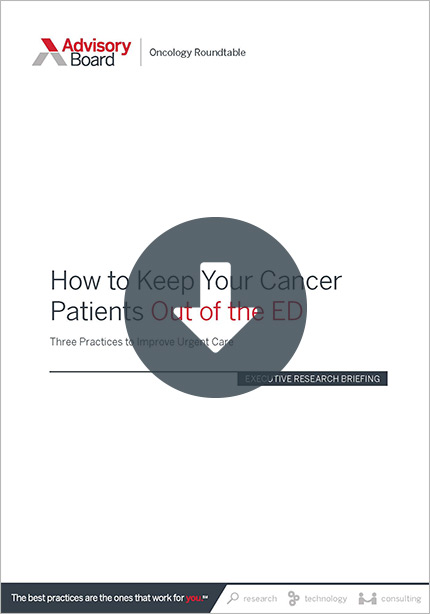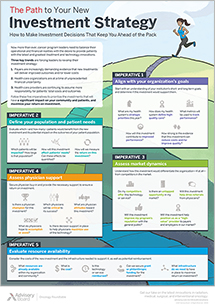Auto logout in seconds.
Continue LogoutThe U.S. cancer death rate in 2015 reached its lowest rate in decades, dropping by 26%—or by about 2.4 million deaths—since 1991, according to an American Cancer Society (ACS) report published Thursday in CA: A Cancer Journal for Clinicians.
The report authors said the decline was fueled by a drop in smoking rates, as well improvements in early cancer detection and treatment.
Report details
For the report, researchers relied on:
- Cancer incidence data from 1995 through 2014 from CDC, National Cancer Institute, and North American Association of Central Cancer Registries databases; and
- Mortality data from 1930 through 2015 from the National Center for Health Statistics.
Researchers used a generalized linear mixed model to project the number of cancer cases and deaths in 2018. The researchers warned that their projections are based on recent trends and do not take into account the possibility of major fluctuations.
Findings
Death rates
Overall, the report found the U.S. cancer death rate fell from a peak of 215.1 cancer deaths per 100,000 population in 1991 to 158.6 cancer deaths per 100,000 population in 2015. They estimated that the decline in cancer mortality rates from 1991 to 2015 meant 2,378,600 fewer people died from cancer.
The researchers found U.S. cancer deaths totaled 595,930 in 2015. According to the report, colorectal, lung, and prostate cancers in men and colorectal, breast, and lung cancers in women accounted for 45% of cancer mortality in 2015. The researchers found four types of cancer—colorectal, female breast, lung, and prostate cancers—saw the greatest declines in death rates in recent decades. According to the report, death rates declined by:
- 52% from 1970 to 2015 for colorectal cancer;
- 52% from 1993 to 2015 for prostate cancer;
- 45% from 1990 to 2015 among men and 19% from 2002 to 2015 among women for lung cancer; and
- 39% from 1989 to 2015 for female breast cancer.
However, the report found death rates from other cancers—such as liver cancers, pancreatic cancer in men, and uterine cancers—have increased.
In terms of race, the researchers found the racial gap in cancer mortality continued to narrow in 2015, likely as a result of more elderly residents becoming eligible for Medicare coverage. However, the study found African Americans, American Indians, and Alaska Natives all had cancer death rates higher than whites.
Incidence rates
According to the report, the overall cancer incidence rate through 2015 remained stable among women and decreased by about 2% annually among men.
Broken down by type of cancer, the researchers found:
- A long-term rapid increase in melanoma incidence rates seemed to slow in men and women, particularly in younger age groups;
- Colorectal cancer incidence patterns were similar in men and women;
- Liver cancer incidence rates continued to increase in women and seemed to stabilize in men;
- Lung cancer incidence rates continued to decrease about twice as fast in men as in women; and
- and
- Thyroid cancer incidence rates seemed to stabilize in men and women.
The researchers found that Asian Americans and Pacific Islanders had the lowest cancer incidence rates among racial groups examined in the report.
2018 projections
Based on current trends, the researchers projected an estimated 609,640 individuals will die from cancer in 2018 and about 1.73 million new cancer cases will be diagnosed this year.
Comments
Eva Chalas, director of NYU Winthrop's Cancer Center who was not involved in the study, said, "It's pretty staggering that 2.4 million deaths have been avoided over the past 20 years." Chalas added, "It's exciting to see the numbers coming down."
ACS CMO Otis Brawley said the declines demonstrate "where cancer control efforts have worked, particularly the impact of tobacco control." He added, "Strikingly though, tobacco remains by far the leading cause of cancer deaths today, responsible for nearly three in ten cancer deaths."
Stephanie Bernik, chief of surgical oncology at Lenox Hill Hospital who was not involved in the study, said, "It is expected that this rate will continue to decrease as we decrease tobacco use, encourage healthy lifestyles, and develop an increased number of targeted therapies to treat cancers in a more individual fashion."
Ahmedin Jemal, VP for surveillance and health services research at ACS, said for younger individuals, the racial disparities in cancer mortality "are huge." He said the disparities in cancer death rates between men and women is likely related due to men reducing their smoking rates faster. Jemal said, "We have to improve access to prevention, detection, and treatment" (George, MedPage Today, 1/4; McGinley, "To Your Health," Washington Post, 1/4; Gordon, CBS News, 1/4; Levingston, Bloomberg, 1/4; ACS release, 1/4; Siegel et al., CA: A Cancer Journal for Clinicians, 1/4).
Tomorrow at 3 pm: Hear our oncology Medicare reimbursement update for 2018
Given that most Part B drug spending goes towards anti-cancer agents, oncology programs are disproportionately affected by changes to 340B. Join us on Tuesday, Jan. 9 at 3 pm ET to hear a complete analysis of the changes in 2018 Medicare payment for cancer services, including updates on site neutrality and 340B regulations.
Don't miss out on the latest Advisory Board insights
Create your free account to access 1 resource, including the latest research and webinars.
Want access without creating an account?
You have 1 free members-only resource remaining this month.
1 free members-only resources remaining
1 free members-only resources remaining
You've reached your limit of free insights
Become a member to access all of Advisory Board's resources, events, and experts
Never miss out on the latest innovative health care content tailored to you.
Benefits include:
You've reached your limit of free insights
Become a member to access all of Advisory Board's resources, events, and experts
Never miss out on the latest innovative health care content tailored to you.
Benefits include:
This content is available through your Curated Research partnership with Advisory Board. Click on ‘view this resource’ to read the full piece
Email ask@advisory.com to learn more
Click on ‘Become a Member’ to learn about the benefits of a Full-Access partnership with Advisory Board
Never miss out on the latest innovative health care content tailored to you.
Benefits Include:
This is for members only. Learn more.
Click on ‘Become a Member’ to learn about the benefits of a Full-Access partnership with Advisory Board
Never miss out on the latest innovative health care content tailored to you.


